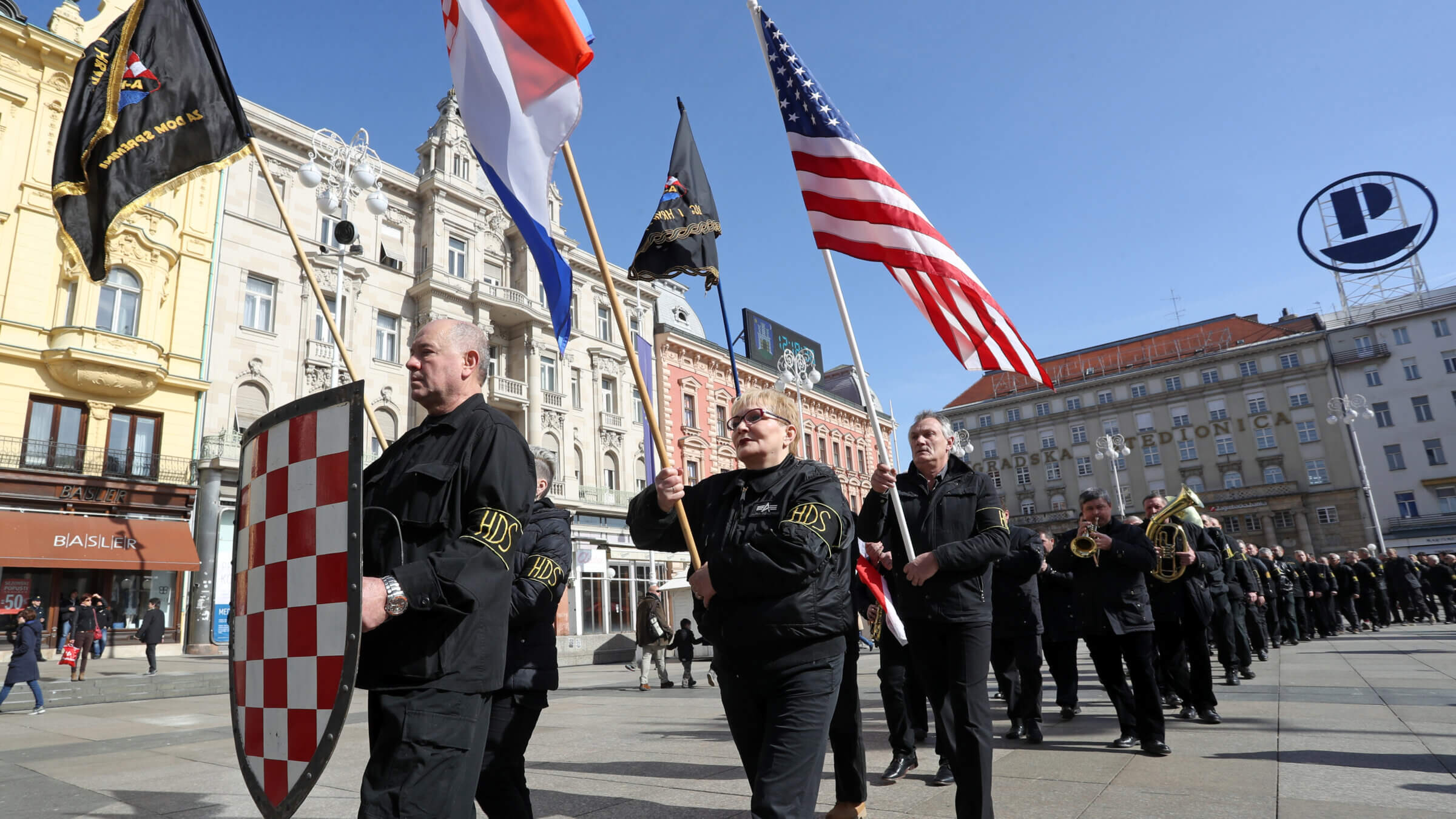Nazi collaborator monuments in Croatia
Mile Budak has 11 streets, and even a pier, named after him

Far-right march with Ustasha symbols, Zagreb, February 26, 2017 (Stringer/AFP via Getty Images). Image by Forward collage
This list is part of an ongoing investigative project the Forward first published in January 2021 documenting hundreds of monuments around the world to people involved in the Holocaust. We are continuing to update each country’s list; if you know of any not included here, or of statues that have been removed or streets renamed, please email editorial@forward.com, subject line: Nazi monument project.
Slavonski Brod and ten other towns — A street named after Mile Budak (1889–1945), chief ideologue and minister of education for Croatia’s fascist Ustasha party, which systematically murdered hundreds of thousands of Jews, Serbs and Roma during the Holocaust.
Budak has additional streets in Jasenice, Pag, Pakoštane, Pleternica, Sisak, Sveti Rok, Vinkovci, Vrana and Zadar and, strangely enough, a pier in Bilice. Coverage in Radio Slobodna Evropa (Radio Free Europe’s Balkan branch; Google translation here) and Balkan Insight. (Many thanks to Rory Yeomans for his invaluable guidance on Croatia.)
For an overview of Ustasha’s brutality, which stands out even in the scope of WWII, see this academic paper.
Donji Dolac — A statue of Branimir Jelić (1905–1972). A peripatetic Ustasha member and close associate of the genocidal Ante Pavelić, Jelić traveled the West working as an Ustasha propagandist among the Croatian diaspora in the U.S. and South America. After the war, Jelić, like many Eastern European Nazi collaborators, branded himself and exiled Ustasha members as warriors against Communism. Below is an Ustasha rally, Zagreb 1941.
Below, a neo-Nazi march in support of Donald Trump featuring Ustasha flag and shield, Zagreb 2017.
Note: the entry below was added during the January 2022 project update.
Bjelovar – This town has a street named for Julije Makanec (1904–1945), writer, philosopher and politician who was Bjelovar’s mayor in 1941. Afterward, Makanec served as Ustasha minister of education and head of education for the Ustasha Youth – the organization devoted to training and indoctrinating new generations of supporters aged 7 to 21 (such groups are a staple of fascist regimes including those in Germany and Italy.) Above right, the photo of an Ustasha Youth march in the April 10, 1944 issue of Ustaška Mladež, the organization’ magazine. “Future bearers of Croatian greatness salute their sovereign,” is the headline.
For Ustasha monuments outside of Croatia, see the Bosnia and Herzegovina and Australia sections.
For more on Croatia’s widespread rehabilitation of the Ustasha, which is manifest in multiple forms, including sports and music, see articles in Balkan Insight, the Jerusalem Post and the Independent; Haaretz on the Ustasha scandal regarding Croatia’s 2018 World Cup team; and Defending History’s Croatia page. For a more detailed read, see Rory Yeomans in The Routledge Handbook of Balkan and Southeast European History, 2020 edition.
A message from our CEO & publisher Rachel Fishman Feddersen
I hope you appreciated this article. Before you go, I’d like to ask you to please support the Forward’s award-winning, nonprofit journalism during this critical time.
We’ve set a goal to raise $260,000 by December 31. That’s an ambitious goal, but one that will give us the resources we need to invest in the high quality news, opinion, analysis and cultural coverage that isn’t available anywhere else.
If you feel inspired to make an impact, now is the time to give something back. Join us as a member at your most generous level.
— Rachel Fishman Feddersen, Publisher and CEO